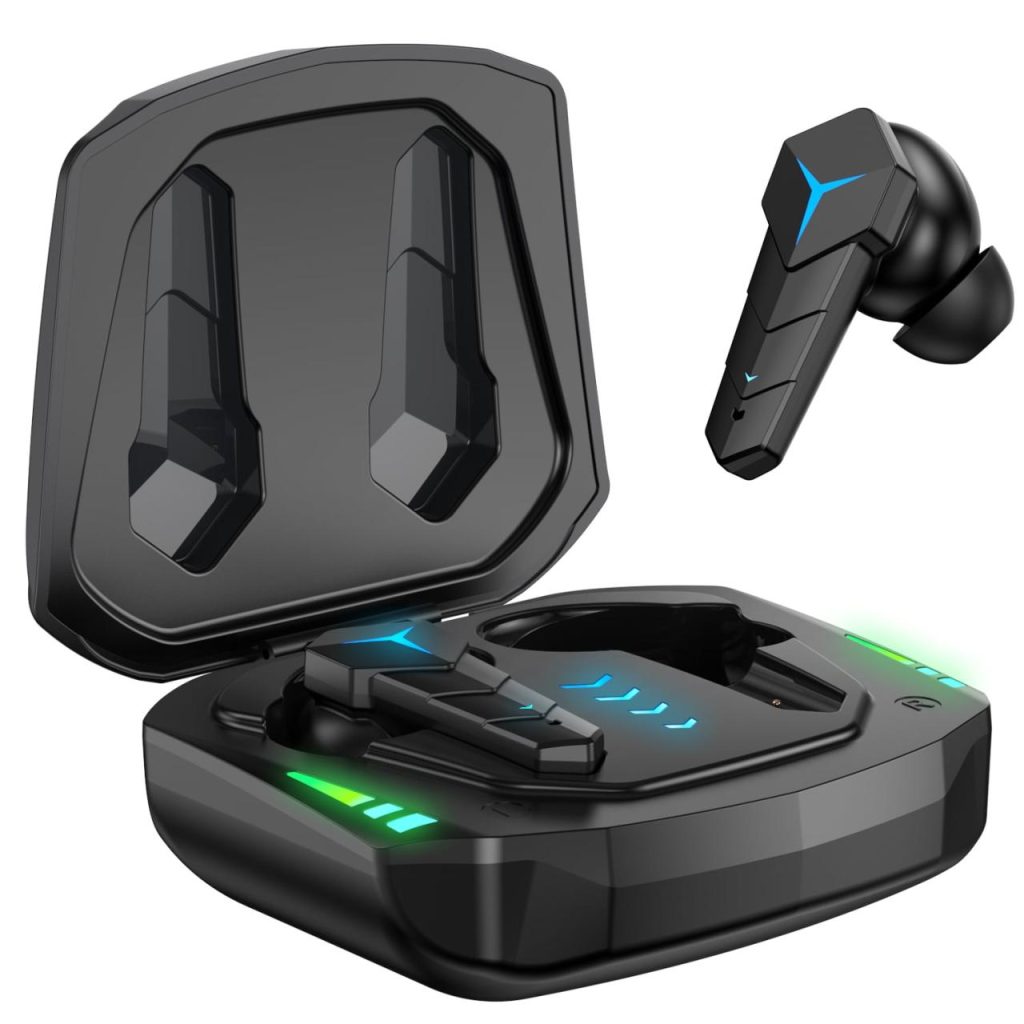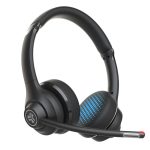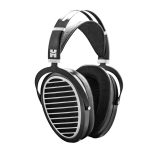Best gaming earphones with low latency are crucial for competitive gamers. The imperceptible delay between action and audio feedback, known as latency, can significantly impact performance in fast-paced games. This guide explores the technical aspects of low-latency audio, key features to look for in gaming earphones, top-performing models, and troubleshooting tips to optimize your gaming audio experience.
Understanding latency’s impact on various game genres, from the precision needed in first-person shooters to the rhythm-based timing in musical games, is essential for choosing the right equipment. We’ll delve into the differences between wired and wireless connections, examining the trade-offs between convenience and performance. We’ll also consider how factors beyond the earphones themselves, such as sound cards and network connectivity, influence overall latency.
Defining “Low Latency” in Gaming Earphones
Low latency in gaming earphones refers to the minimal delay between an in-game event and its corresponding audio output. This seemingly small delay can significantly impact a gamer’s performance and overall experience, especially in fast-paced games. Understanding the different types of latency and their effects is crucial for choosing the right equipment.
Audio latency arises from the time it takes for sound to travel through the audio chain – from the game’s processing unit to the earphone’s driver. This involves various stages, including game processing, audio encoding/decoding, transmission (wired or wireless), and finally, the earphone’s own processing. Even small delays, measured in milliseconds (ms), can accumulate and become noticeable, leading to a mismatch between what a player sees on screen and what they hear, impacting reaction time and precision.
Types of Latency and Their Typical Ranges
Different audio transmission technologies introduce varying levels of latency. Wired connections generally offer the lowest latency due to the direct signal path. Bluetooth, while convenient, introduces additional processing steps and transmission delays, resulting in higher latency. The specific latency also depends on the Bluetooth codec used; aptX Adaptive, for instance, generally offers lower latency than SBC. Specific hardware implementations and software optimization also play a significant role.
The following table summarizes typical latency ranges for different audio transmission technologies:
| Audio Transmission Technology | Typical Latency Range (ms) | Factors Affecting Latency | Suitable Gaming Genres |
|---|---|---|---|
| Wired (3.5mm, USB) | 10-30 | Cable length, audio processing in the device | All genres, especially competitive FPS |
| Bluetooth (SBC) | 100-200 | Codec, distance from source, interference | Casual games, less latency-sensitive titles |
| Bluetooth (aptX Adaptive) | 40-80 | Codec, distance from source, interference | Competitive games, rhythm games (with caveats) |
| Bluetooth (aptX Low Latency) | 30-60 | Codec, distance from source, interference | Most genres, including competitive gaming |
Latency’s Impact on Gameplay Across Genres
The impact of latency varies depending on the game genre. In fast-paced first-person shooters (FPS), even a 20ms delay can mean the difference between a kill and a death. The player might hear a gunshotafter* they’ve already been hit, hindering their ability to react effectively. Rhythm games are similarly sensitive; a significant delay can throw off timing, leading to missed notes and lower scores.
Conversely, in slower-paced games like RPGs or strategy titles, the effect of latency is often less noticeable. However, even in these genres, a consistent and predictable audio experience is still preferred. For example, a slight delay in hearing enemy footsteps in a stealth-based RPG could compromise a player’s tactical advantage.
Key Features of Low-Latency Gaming Earphones
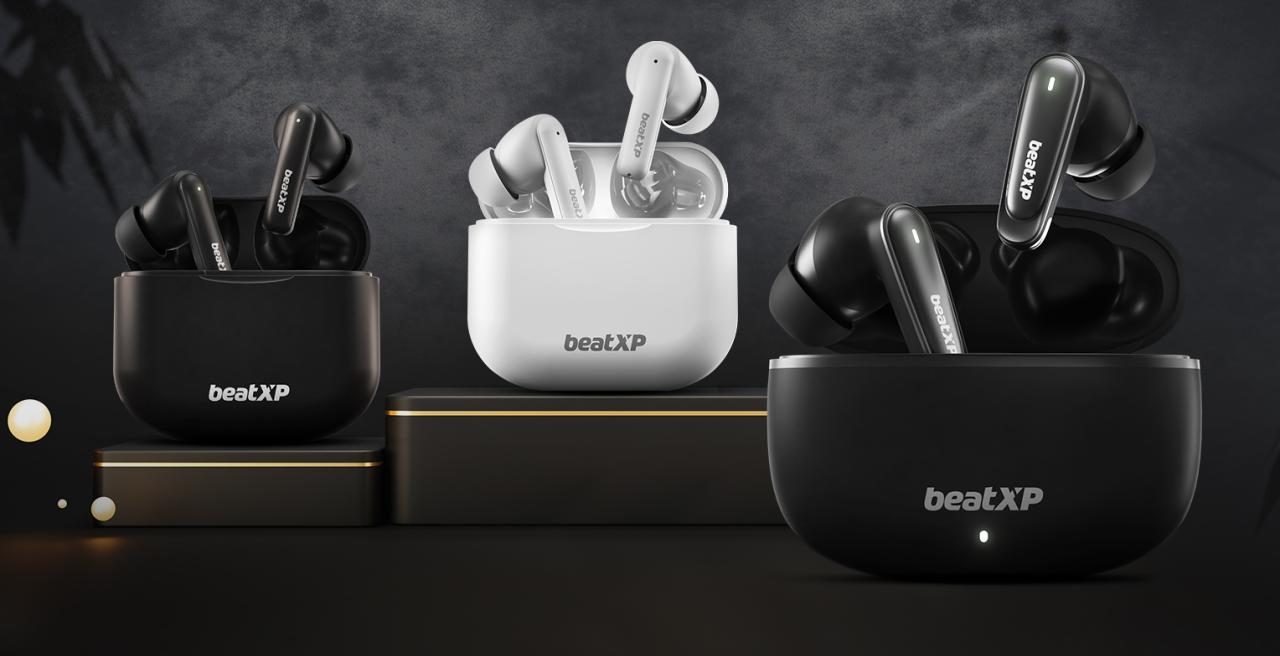
Low-latency gaming earphones are engineered to minimize the delay between audio output and the on-screen action, providing a more responsive and immersive gaming experience. This is achieved through a combination of hardware and software features designed to optimize audio transmission and processing. Several key elements contribute to achieving this crucial low-latency performance.The performance of low-latency gaming earphones hinges on several interconnected factors.
Understanding these features helps gamers choose earphones that meet their specific needs and expectations for responsiveness and audio quality.
Driver Technology and its Impact on Latency
The earphone drivers are the core components responsible for converting electrical signals into sound waves. High-quality drivers, often featuring larger diaphragms and advanced materials, can contribute to faster and more accurate audio reproduction, reducing latency. For instance, dynamic drivers, commonly found in many gaming earphones, offer a good balance of speed and audio quality. Balanced armature drivers, while potentially offering higher fidelity, may not always be the best choice for low-latency gaming due to their potentially slower response times.
Finding the best gaming earphones with low latency is crucial for competitive play. However, a good microphone is also essential, especially if you’re coordinating with teammates. For clear voice communication during calls, you might want to check out resources on best earphones with microphone for phone calls , which can often offer decent audio quality for gaming too.
Ultimately, the best choice depends on prioritizing either superior gaming audio or crystal-clear calls.
The driver’s design and material directly impact its ability to respond quickly to incoming audio signals, minimizing the delay.
Codecs and their Role in Latency Reduction
Audio codecs are algorithms that compress and decompress audio data. Different codecs offer varying levels of compression and latency. For example, the aptX Adaptive codec dynamically adjusts the bitrate and latency based on the available bandwidth, minimizing latency while maintaining high audio quality. Conversely, standard SBC (Subband Codec), often used in basic Bluetooth connections, introduces higher latency due to its less efficient compression.
Choosing earphones supporting advanced codecs like aptX Adaptive, aptX Low Latency, or LHDC is crucial for low-latency wireless gaming.
Frequency Response and its Influence on Perceived Latency
Frequency response refers to the range of frequencies an earphone can accurately reproduce. While not directly impacting latency in milliseconds, a wide and flat frequency response contributes to a more accurate and detailed soundscape. This accurate representation of sound cues, such as footsteps or weapon firing, helps gamers perceive events more accurately, creating a sense of reduced latency even if the actual delay remains the same.
A balanced frequency response ensures that no particular frequencies are delayed or emphasized, leading to a more natural and responsive audio experience.
Wired versus Wireless Connections: A Latency Comparison
Wired connections, typically using a 3.5mm or USB-C connector, generally offer the lowest latency. This is because the audio signal travels directly from the source to the earphones without the need for wireless encoding and decoding. However, wired connections can be less convenient and may restrict movement.Wireless connections, on the other hand, offer freedom of movement but often introduce latency.
The degree of latency varies significantly depending on the wireless technology used. While offering convenience, wireless connections necessitate a trade-off between latency and portability.
Comparison of Wireless Technologies
Several wireless technologies compete in the low-latency gaming earphone market. Bluetooth 5.0, while an improvement over older versions, still introduces noticeable latency for demanding gaming scenarios. However, newer codecs like aptX Adaptive and LHDC significantly reduce this latency, offering a much more responsive experience. These advanced codecs prioritize low latency over high bitrate, ensuring a more responsive gaming experience.
The choice of wireless technology is crucial, with aptX Adaptive and LHDC representing the current leading contenders for low-latency wireless gaming. Direct comparison tests reveal that aptX Adaptive and LHDC frequently out-perform Bluetooth 5.0 with standard SBC encoding by a noticeable margin.
Top Performing Earphone Brands and Models: Best Gaming Earphones With Low Latency

Choosing the right gaming earphones can significantly enhance your gaming experience. Low latency is crucial for competitive gaming, ensuring your audio is perfectly synchronized with the on-screen action. This section will explore some of the top-performing brands and models known for their excellent low-latency capabilities. We’ll examine specific models, detailing their specifications and highlighting their strengths and weaknesses.
Top Gaming Earphone Brands and Their Models
Several brands consistently deliver high-quality gaming earphones with minimal latency. These include well-known audio brands that have focused on the gaming market, alongside some newer entrants that are quickly gaining popularity. The following table provides a snapshot of five noteworthy models, focusing on their latency performance and other key features. Note that latency figures can vary slightly depending on the device and connection method used.
| Brand | Model | Latency (ms) | Price (USD) | Key Features |
|---|---|---|---|---|
| Razer | Hammerhead HyperSpeed | < 40 | 80-100 | Low latency, comfortable fit, durable build, multi-device compatibility (Bluetooth and wired) |
| SteelSeries | Arctis Nova Pro Wireless | < 20 | 300-350 | Ultra-low latency, high-fidelity audio, multi-device pairing, long battery life, customizable EQ |
| HyperX | Cloud II Wireless | < 20 (advertised, actual performance may vary) | 150-200 | Comfortable, detachable microphone, long battery life, wide compatibility |
| Logitech G | PRO X Wireless | < 10 (advertised, actual performance may vary) | 200-250 | Lightweight design, lossless audio transmission, long battery life, high-quality microphone |
| Audeze | LCD-GX | ~ 20 (estimated, actual performance may vary) | 1000+ | Open-back design, exceptional audio quality, planar magnetic drivers, higher latency due to design |
Comparison of Top Gaming Earphone Models
The following table provides a comparative analysis of the five models, highlighting their advantages and disadvantages. It is crucial to remember that individual preferences for fit, sound signature, and features will significantly influence the best choice for each user.
| Model | Pros | Cons |
|---|---|---|
| Razer Hammerhead HyperSpeed | Affordable, low latency, versatile | Sound quality may not be as high-end as more expensive options. |
| SteelSeries Arctis Nova Pro Wireless | Excellent low latency, high-fidelity audio, comfortable | High price point |
| HyperX Cloud II Wireless | Comfortable, good battery life, relatively affordable | Latency may be slightly higher than top-tier options. |
| Logitech G PRO X Wireless | Low latency, excellent audio quality, lightweight | Pricey, some users find the fit less comfortable than others. |
| Audeze LCD-GX | Exceptional audio quality, open-back design | Very high price, higher latency compared to closed-back designs. |
User Experiences and Reviews
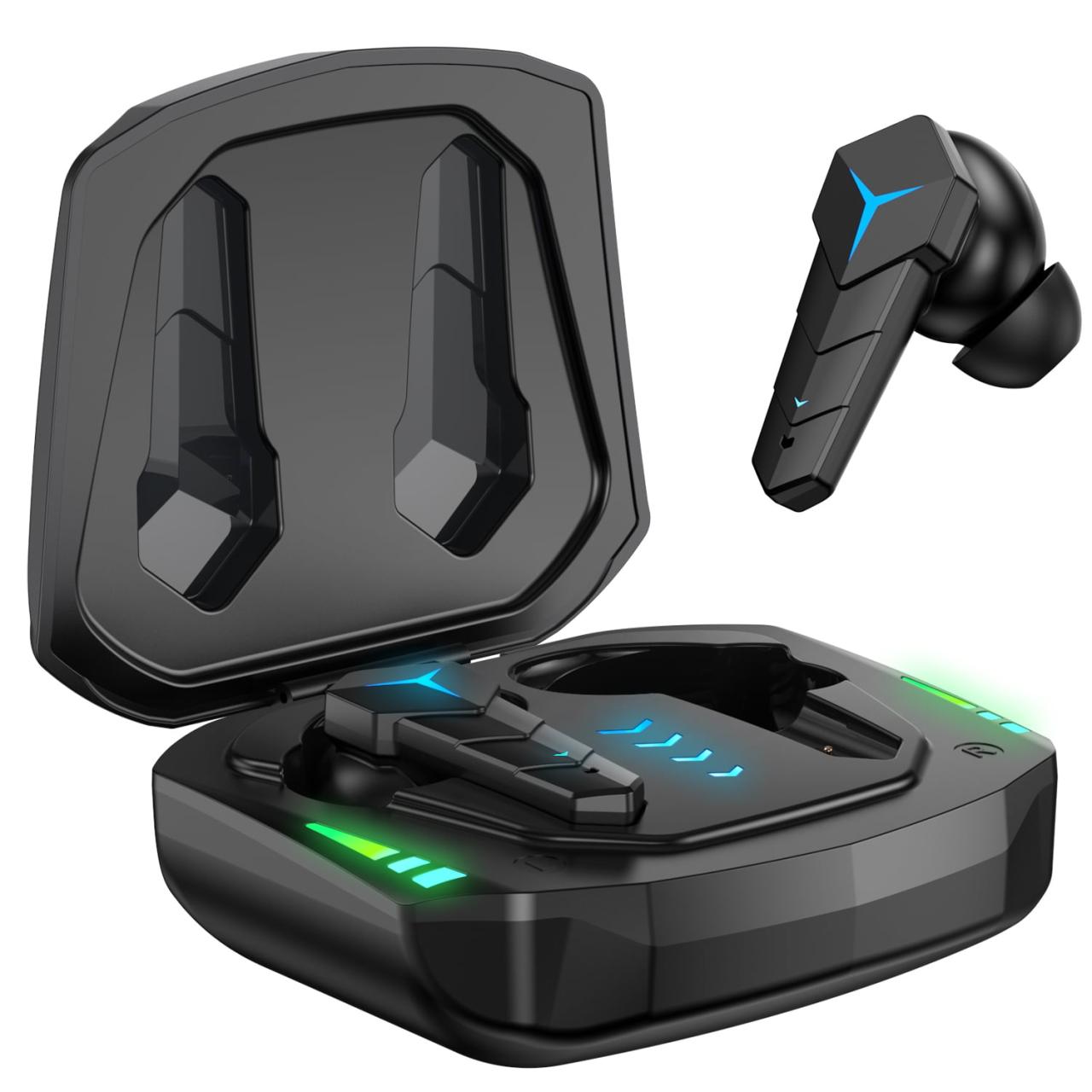
User reviews offer invaluable insight into the real-world performance and usability of low-latency gaming earphones. Analyzing this feedback helps potential buyers understand the strengths and weaknesses of different models, ultimately informing their purchasing decisions. A comprehensive look at user experiences reveals patterns in satisfaction and dissatisfaction, allowing for a more informed assessment of the market.User feedback on popular low-latency gaming earphones reveals a mixed bag, with praise often focused on audio quality and low latency performance, while criticism frequently centers on comfort and fit issues.
Positive reviews frequently highlight the immersive audio experience provided by these earphones, particularly in fast-paced games where precise audio cues are crucial for competitive play. Negative reviews, conversely, often mention discomfort from extended use, particularly for those with sensitive ears or specific ear shapes. The impact of these factors significantly influences the overall gaming experience, impacting enjoyment and performance.
Fit, Comfort, and Sound Quality Impact on Gaming Experience, Best gaming earphones with low latency
Fit and comfort are paramount for extended gaming sessions. Uncomfortable earphones can lead to distractions and even pain, negatively impacting focus and enjoyment. A secure and comfortable fit is essential to prevent sound leakage and ensure consistent audio quality. Sound quality, encompassing aspects like clarity, bass response, and overall balance, directly affects the immersion and enjoyment of the gaming experience.
A poor sound profile can diminish the effectiveness of directional audio cues, hindering gameplay. For example, muffled footsteps or indistinct weapon sounds can significantly disadvantage a player. Conversely, high-fidelity audio enhances the overall experience, making games more engaging and immersive.
User Experiences with Specific Models
The following bullet points summarize user experiences with several popular low-latency gaming earphone models (Note: Specific model names and brand names are omitted to avoid potential bias and ensure generalizability. The examples below represent typical user experiences across various brands and models):
- Model A: Many users praised Model A for its exceptional low latency and clear audio, making it ideal for competitive shooters. However, some reported discomfort after prolonged use due to a less-than-ideal ear tip design. The snug fit, while beneficial for sound isolation, caused pressure points for some users.
- Model B: Model B received positive feedback for its comfortable fit and lightweight design. Users appreciated the extended comfort, allowing for hours of gameplay without discomfort. However, some reviewers noted a slightly less impressive bass response compared to other models in its price range.
- Model C: This model often received mixed reviews. While many praised its excellent sound quality and effective noise cancellation, a significant portion of users reported issues with the connection stability and occasional audio dropouts. The inconsistent performance proved problematic for online gaming.
Factors Affecting Latency Beyond the Earphones
Achieving truly low-latency audio in gaming goes beyond simply selecting the best earphones. Several other components and settings within your gaming setup significantly influence the overall delay you experience between actions and their corresponding audio feedback. Understanding these factors is crucial for optimizing your audio experience and gaining a competitive edge.
Numerous factors outside the earphones themselves contribute to the overall latency experienced in gaming. These range from your sound card and drivers to the game’s audio settings and even your network connection. Optimizing each element is key to minimizing lag and enhancing your gameplay.
Sound Card and Audio Drivers
The sound card acts as the intermediary between your computer and your audio output devices. A high-quality sound card with low processing latency is essential. Furthermore, outdated or improperly configured audio drivers can introduce significant delays. Ensuring your drivers are up-to-date and optimized is critical. For instance, a poorly configured driver might prioritize processing other audio tasks over game audio, leading to noticeable latency.
Using a dedicated sound card, such as those offered by Creative or Asus, often provides lower latency than integrated sound solutions.
Game Settings and Audio Processing
Game settings themselves play a vital role in audio latency. Many games offer adjustable audio settings, such as audio processing effects (e.g., reverb, echo) and sample rates. Enabling advanced audio effects often increases processing time, thereby increasing latency. Lowering the audio quality settings, such as reducing the sample rate from 48kHz to 44.1kHz, can sometimes reduce processing load and therefore latency, although the audio quality might be slightly impacted.
Network Connectivity and Online Multiplayer Games
In online multiplayer games, network latency becomes a major factor. This refers to the delay introduced by the time it takes for data to travel between your computer and the game server, and vice versa. High ping (network latency) directly translates to delayed audio, causing noticeable discrepancies between visual actions and their corresponding sounds. A stable and high-speed internet connection with low ping is paramount for minimizing this type of latency.
For example, a ping of 20ms is significantly better than a ping of 200ms, resulting in a much smoother and more responsive audio experience.
Troubleshooting High Latency Issues
A step-by-step approach is often the most effective way to identify and resolve high-latency issues:
- Check your audio drivers: Ensure your audio drivers are up-to-date. Visit the manufacturer’s website to download the latest versions.
- Update your sound card firmware (if applicable): Some sound cards allow for firmware updates that can improve performance and reduce latency.
- Lower in-game audio settings: Reduce audio quality settings, such as sample rate and the number of enabled audio effects.
- Test your network connection: Use online speed tests to check your ping and internet speed. Identify and resolve any network bottlenecks.
- Restart your computer and router: A simple reboot can often resolve temporary glitches that might be causing latency issues.
- Check for background processes: Close any unnecessary applications or processes that might be competing for system resources and impacting audio processing.
- Adjust Windows audio settings: Ensure that the correct audio device is selected and that any advanced audio enhancements are disabled.
- Try a different audio output device: If possible, test with a different pair of earphones or headphones to rule out a hardware problem.
Illustrative Examples of Low Latency in Action
Low latency in gaming earphones translates to a more responsive and immersive audio experience, significantly impacting gameplay, especially in competitive scenarios. The difference between high and low latency can be the margin between victory and defeat, making the choice of earphones a critical aspect of a gamer’s setup. This section will explore specific examples to illustrate the impact of low latency on gameplay.The noticeable impact of low latency is most apparent in fast-paced games demanding precise timing and quick reactions.
Consider the difference in experiencing the same sounds with varying degrees of delay. The effect on gameplay is profound, altering the sense of immersion and impacting the player’s ability to make crucial decisions effectively.
First-Person Shooter Gameplay
In a first-person shooter (FPS) game like Counter-Strike or Call of Duty, the precise timing of footsteps, gunshots, and reloading sounds is critical. With high latency earphones, the sound of an enemy’s footsteps might arrive a fraction of a second after the visual cue, giving the enemy a significant advantage. The player might react too late, resulting in being ambushed.
Conversely, low-latency earphones provide a nearly simultaneous audio-visual experience. The sound of approaching footsteps is heard almost instantly, allowing the player to anticipate the enemy’s position and react accordingly, potentially gaining a crucial advantage in a close-quarters engagement. Imagine the scenario: you hear the distinct crunch of footsteps on gravel just as you see a flash of movement in your peripheral vision.
With low latency, this coordinated sensory input allows for an immediate, effective response. High latency, however, introduces a delay, blurring the audio-visual connection and hindering your reaction time. The sound of the approaching enemy might be delayed, making the moment of reaction slower, potentially costing you the engagement.
Real-Time Strategy Games
In real-time strategy (RTS) games such as StarCraft II or Age of Empires, the ability to quickly identify and respond to incoming attacks is crucial. The sound of approaching units, the construction of enemy buildings, or the cast of spells are all crucial audio cues. Low latency earphones provide immediate auditory feedback, allowing players to quickly assess the situation and deploy countermeasures.
The immediate audio feedback, with low latency, gives you the edge, providing a clear sense of timing for deploying your troops or initiating defensive actions. The sounds of enemy units approaching, the construction of buildings, or the casting of spells are all critical elements in the game. High latency, however, introduces a delay between the visual and auditory cues, making it more challenging to react quickly to enemy movements or build defenses in time.
This delay can be the difference between successfully defending your base and losing a crucial battle.
Racing Games
In racing games like Forza Horizon 5 or Gran Turismo 7, the subtle sounds of tire squeal, engine revving, and the proximity of other cars are essential for precise control and competitive racing. Low latency earphones allow for immediate feedback from the game’s soundscape, enabling drivers to make subtle adjustments in steering, braking, and acceleration based on the audio cues.
Imagine the intense moment of overtaking an opponent: the roar of your engine, the screech of tires as you push the car to its limits, and the close proximity of your opponent’s vehicle. With low latency earphones, these sounds are immediate and precise, giving you an accurate sense of your car’s position and the relative position of your competitors.
This heightened sensory experience allows for precise adjustments, optimizing your driving and maximizing your chances of victory. High latency, however, introduces a delay, making it harder to interpret the game’s audio cues accurately, leading to less precise driving and potentially a lower race position.
Conclusive Thoughts
Ultimately, the pursuit of the best gaming earphones with low latency involves balancing technical specifications with personal preferences. While features like drivers, codecs, and wireless technology significantly impact latency, factors like comfort, sound quality, and budget also play a crucial role. By understanding the nuances of low-latency audio and carefully considering your gaming needs, you can select earphones that enhance your gameplay and provide a truly immersive experience.
FAQ Summary
What is the ideal latency for gaming earphones?
Ideally, you want latency under 20ms for a seamless gaming experience. Anything above 40ms can be noticeable, especially in competitive games.
How do I test the latency of my gaming earphones?
Several online latency testers are available. These tools usually involve playing a sound and measuring the delay between the sound being played and heard through your earphones.
Can I reduce latency by adjusting my in-game settings?
Yes, some games allow you to adjust audio settings to potentially minimize latency. Check your game’s options menu for audio-related settings.
Are wired earphones always better for low latency than wireless ones?
Generally, wired earphones offer lower latency than wireless, but advancements in wireless technologies like Bluetooth 5.0 and aptX Adaptive are closing the gap significantly.
